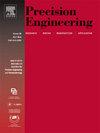剪切增厚抛光技术的研究进展
IF 3.5
2区 工程技术
Q2 ENGINEERING, MANUFACTURING
Precision Engineering-Journal of the International Societies for Precision Engineering and Nanotechnology
Pub Date : 2025-05-05
DOI:10.1016/j.precisioneng.2025.04.030
引用次数: 0
摘要
剪切增厚抛光(STP)是一种新兴的精密抛光技术,它通过精确控制剪切速率来动态调节抛光液的粘度,从而提高材料去除率(MRR)和表面精度,同时有效抑制传统抛光方法中常见的表面缺陷,如划痕和微裂纹。这扩大了其在精密制造和微电子等高科技领域的潜在应用。研究表明,在优化参数(抛光速度:70 rpm,抛光角度:70°,磨料颗粒浓度:12 wt%)下,STP对光学玻璃的MRR高达813.63 nm/min。此外,在38°C、0.6 μm磨粒、600 rpm抛光速度和12 vol%磨粒浓度条件下,自适应剪切梯度增厚抛光(AS-GTP)可以将铌酸锂(LN)晶体亚表面损伤深度和表面粗糙度(Ra)降低到1 nm以下。然而,目前对STP的研究还很零散,缺乏全面的综述。为了弥补这一差距,本文基于非牛顿流体的剪切增稠特性,系统地回顾了剪切增稠抛光液的主要类型,并深入讨论了不同STP方法的工作机理和工艺优化策略。最后总结了STP的最新研究进展,分析了STP未来的发展趋势和产业化面临的挑战。本文章由计算机程序翻译,如有差异,请以英文原文为准。
Research progress of shear-thickening polishing technology: A review
Shear-thickening polishing (STP) is an emerging precision polishing technology that dynamically adjusts the viscosity of polishing fluid by precisely controlling the shear rate, thereby enhancing material removal rate (MRR) and surface accuracy while effectively suppressing surface defects such as scratches and microcracks commonly found in conventional polishing methods. This expands its potential applications in high-tech fields such as precision manufacturing and microelectronics. Studies have shown that under optimized parameters (polishing speed: 70 rpm, polishing angle: 70°, abrasive particle concentration: 12 wt%), STP achieves an MRR of up to 813.63 nm/min on optical glass. Additionally, under conditions of 38 °C, abrasive particle size of 0.6 μm, polishing speed of 600 rpm, and abrasive particle concentration of 12 vol%, adaptive shear-gradient thickening polishing (AS-GTP) can reduce the subsurface damage depth and surface roughness (Ra) of lithium niobate (LN) crystals to below 1 nm. However, research on STP remains fragmented, and a comprehensive review is currently lacking. To bridge this gap, this article systematically reviews the primary types of shear-thickening polishing fluid based on the shear-thickening characteristics of non-Newtonian fluids and provides an in-depth discussion of the working mechanisms and process optimization strategies of different STP methods. Finally, the latest advancements in STP are summarized, and its future development trends and industrialization challenges are analyzed.
求助全文
通过发布文献求助,成功后即可免费获取论文全文。
去求助
来源期刊
CiteScore
7.40
自引率
5.60%
发文量
177
审稿时长
46 days
期刊介绍:
Precision Engineering - Journal of the International Societies for Precision Engineering and Nanotechnology is devoted to the multidisciplinary study and practice of high accuracy engineering, metrology, and manufacturing. The journal takes an integrated approach to all subjects related to research, design, manufacture, performance validation, and application of high precision machines, instruments, and components, including fundamental and applied research and development in manufacturing processes, fabrication technology, and advanced measurement science. The scope includes precision-engineered systems and supporting metrology over the full range of length scales, from atom-based nanotechnology and advanced lithographic technology to large-scale systems, including optical and radio telescopes and macrometrology.

 求助内容:
求助内容: 应助结果提醒方式:
应助结果提醒方式:


